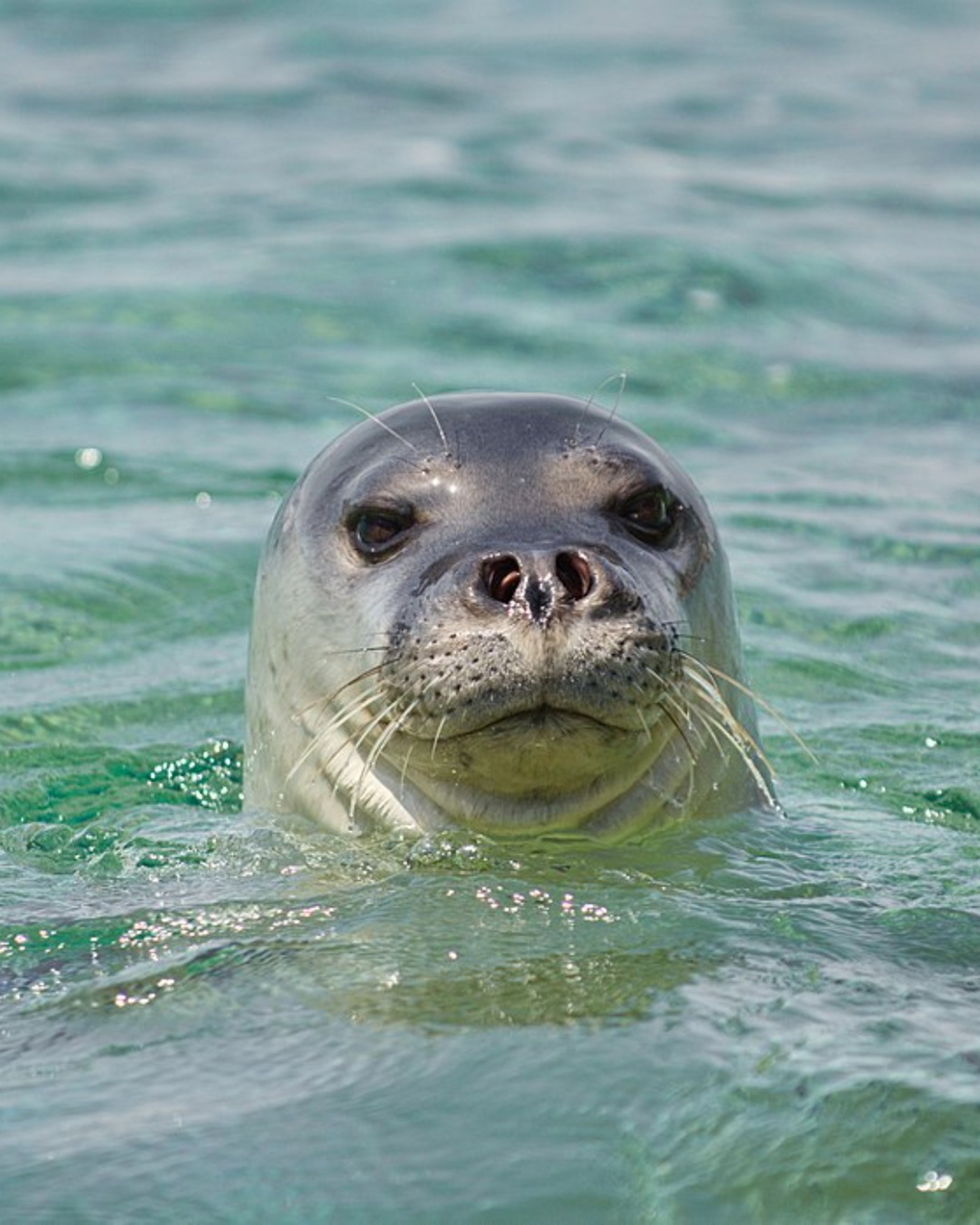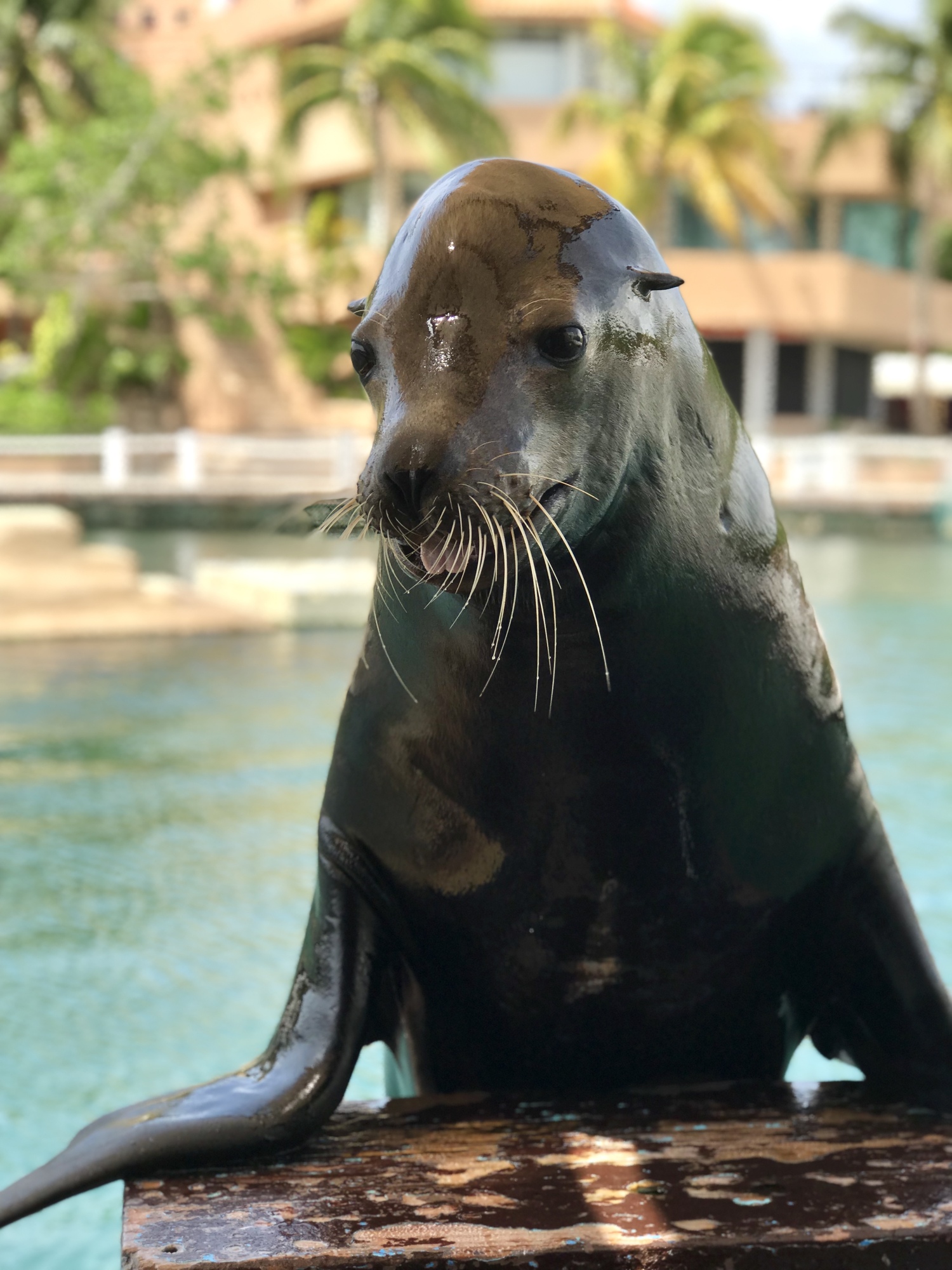
Beautiful, tender, and with a look that melts you, that’s how Sea Lions are, but they are often confused with Seals. In this blog, Carlos Ortiz, our Dolphin Discovery Vallarta Veterinarian, tells us about the differences and characteristics of these beautiful species.
What are the characteristics of Sea Lions and Seals?
Sea Lions and Seals are fascinating mammals that share many similarities, but many characteristics set them apart. Both species belong to a group called Pinnipeds (fin-shaped feet); their four limbs are modified for adaptation to the aquatic environment. Seals belong to the Phocidae family, and Sea Lions to the Otariidae family.
How to distinguish Sea Lions from a Seal?
Carlos tells us that a characteristic of Sea Lions is the dark placement of the teeth. These species do not have enamel-like humans, but they have various microorganisms, known as oral cavity microbiota, that interact and create a coating that helps protect teeth. A calf’s teeth are white and darken over the years.
In general, Sea Lions are very noisy, producing loud vocalizations called barks and bellows, while the Seals are calmer and vocalize through grunts and light moans. This is because Sea Lions congregate in large groups on land and are highly social, while Seals tend to be more solitary.
When looking at the head of the Seals, you can see a hole on each side, which corresponds to the ear canal, while the Sea Lions have a well-developed auricle that forms an ear. The word Otariidae is derived from the Greek otis; which does ear mean. The neck of Sea Lions is long and slender, while the neck of Seals is very short, and in some animals, there may be a skin fold on the ventral part.
Who is faster, the Sea Lions or the Seals?
The pectoral fins of Seals are short compared to the Sea Lions. Both species have an amphibious life, meaning they can move in water and land.
Seals have a more compact and hydrodynamic appearance; their short pelvic fins are directed backward and are incapable of rotation, while Sea Lions can perform a forward rotation of their long pelvic fins (as if they were sitting), allowing better ground displacement.
Due to all these differences, Seals are better adapted to water; however, Sea Lions can reach speeds of up to 21.6 km/h. They have excellent locomotion on land; they are fast and agile, while the Seals move on their belly, making movements similar to a worm.
What is the Gestation Period for Sea Lions and Seals?
A fascinating characteristic of Sea Lions and Seals is that during gestation, they present a period called embryonic diapause, also known as delayed implantation. After conception, there is a slow embryonic development, which delays implantation in the uterus for the offspring to be born at a good time for survival, for example, better availability of food, etc. So, although most of these species have an average gestation period of 11 months and 15 days, the calf develops like any other mammal for nine months, and the first three months of diapause must also be added.
 What do Sea Lions and Seals eat?
What do Sea Lions and Seals eat?
Sea Lions and Seals feed on fish and shellfish. In the Dolphin Discovery, the beautiful Sea Lions under our care eat capelin, herring, anchovy, sardines, and squid. All these fish is imported from Canada, the United States, and Europe, following the highest quality standards and kept at -18°C to preserve their nutritional properties.
How many species of Sea Lions are there?
There are 15 species of Sea Lions worldwide. Of these, two species are found in various Dolphin Discovery habitats in Mexico, the Californian Sea Lion (Zalophus californianus) and the South American or Patagonian Sea Lion (Otaria flavesces). The Californian Sea Lions are more stylized and smaller, compared to the South Americans, in addition to the fact that the latter has a large body size and a wide mouth.
Now that you know a little about the difference between Sea Lions and Seals, we invite you to live the incredible experience of interacting with Sea Lions, discover our Programs, and learn much more surprising data from the hands of our Veterinarians and Mammal Specialists. Marines.
Ver esta publicación en Instagram
